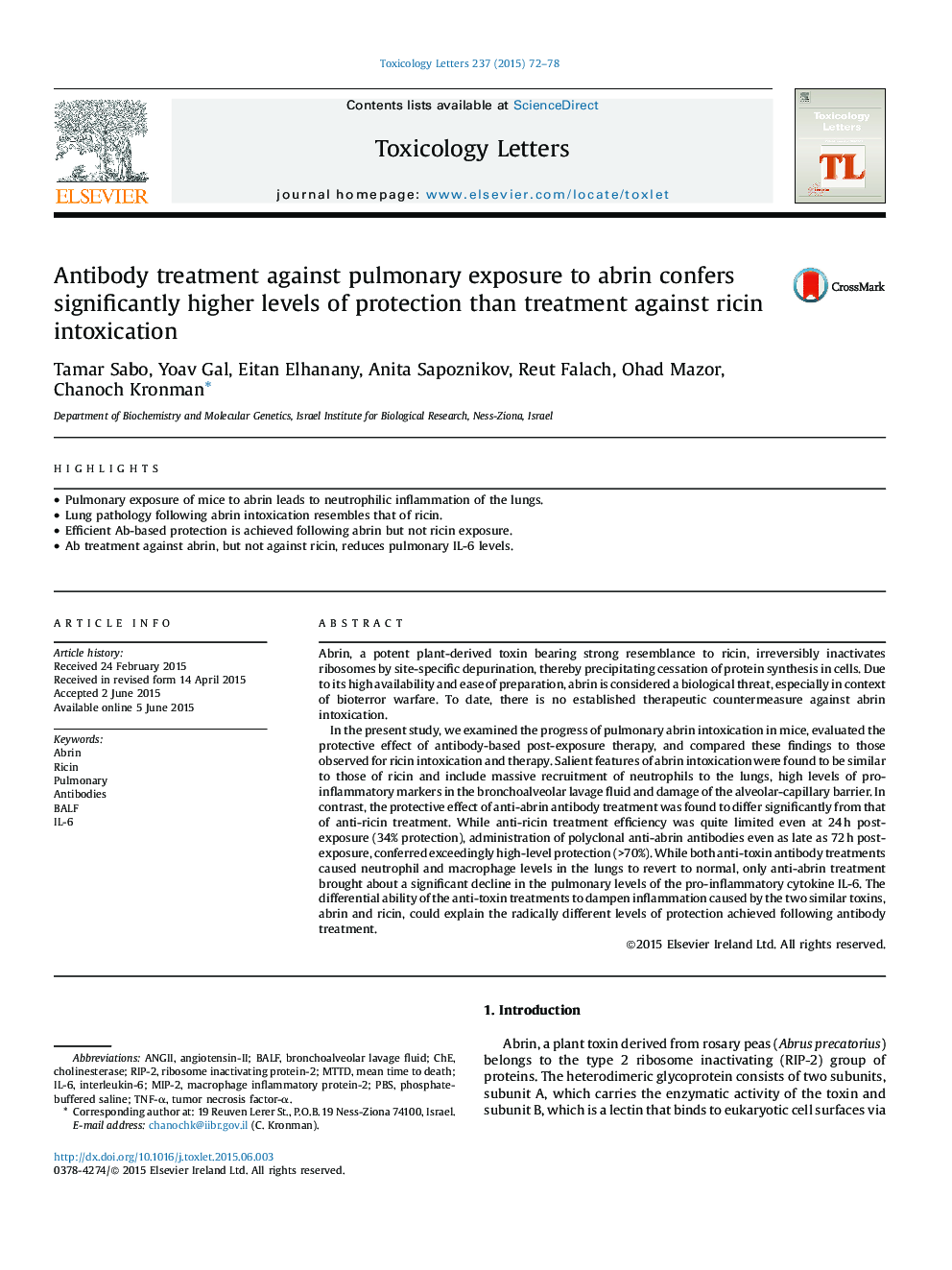| Article ID | Journal | Published Year | Pages | File Type |
|---|---|---|---|---|
| 2598625 | Toxicology Letters | 2015 | 7 Pages |
Abstract
In the present study, we examined the progress of pulmonary abrin intoxication in mice, evaluated the protective effect of antibody-based post-exposure therapy, and compared these findings to those observed for ricin intoxication and therapy. Salient features of abrin intoxication were found to be similar to those of ricin and include massive recruitment of neutrophils to the lungs, high levels of pro-inflammatory markers in the bronchoalveolar lavage fluid and damage of the alveolar-capillary barrier. In contrast, the protective effect of anti-abrin antibody treatment was found to differ significantly from that of anti-ricin treatment. While anti-ricin treatment efficiency was quite limited even at 24Â h post-exposure (34% protection), administration of polyclonal anti-abrin antibodies even as late as 72Â h post-exposure, conferred exceedingly high-level protection (>70%). While both anti-toxin antibody treatments caused neutrophil and macrophage levels in the lungs to revert to normal, only anti-abrin treatment brought about a significant decline in the pulmonary levels of the pro-inflammatory cytokine IL-6. The differential ability of the anti-toxin treatments to dampen inflammation caused by the two similar toxins, abrin and ricin, could explain the radically different levels of protection achieved following antibody treatment.
Related Topics
Life Sciences
Environmental Science
Health, Toxicology and Mutagenesis
Authors
Tamar Sabo, Yoav Gal, Eitan Elhanany, Anita Sapoznikov, Reut Falach, Ohad Mazor, Chanoch Kronman,
